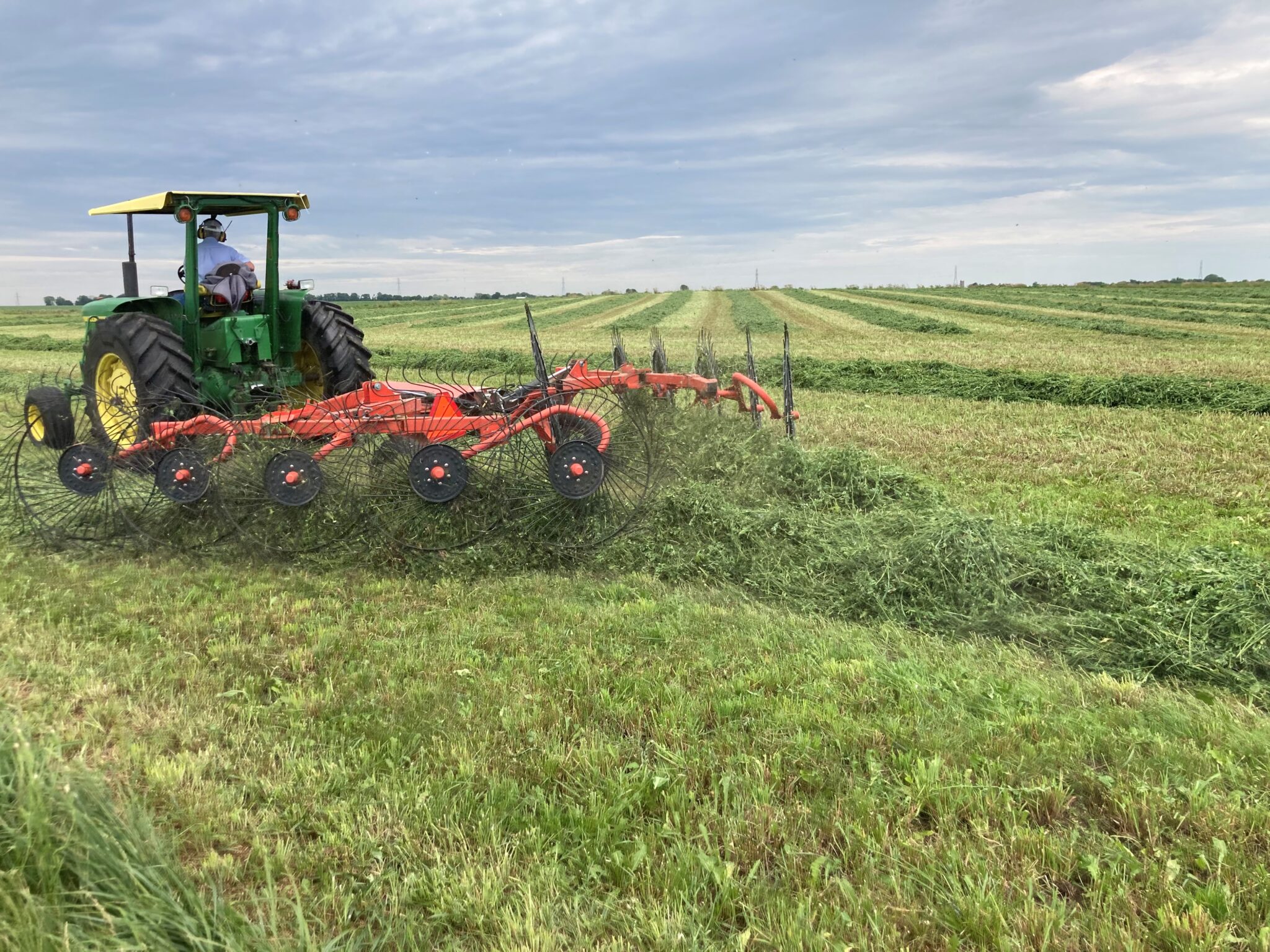To make excellent quality hay, the forage needs to be cut at the right growth stage and packaged into a bale at the right moisture content without incidence of rain damage. As forages mature, protein and digestibility concentrations decline. If the forage is harvested too late, dry matter intake by the consuming animal will be less because of high fiber concentration.
What are “Best Management Practices” associated with haymaking?
- Take advantage of every hour that the sun shines. While mid-afternoon is the time of day that there is a slight improvement in forage quality because of elevated sugar content, if the weather forecast for drying hay to safe baling moisture is questionable, consider mowing in the morning to have more drying time.
- Mow the forage with a properly set mower-conditioner so the stems are crimped every three to four inches. This will increase rate of moisture loss.
- Lay the forage in a wide swath and not a narrow windrow. This, too, will increase drying rate.
- Consider tedding the crop if there is concern about not getting to a safe baling moisture before inclement weather occurs. Tedding should occur when the moisture is greater than 50 percent to reduce yield and quality loss from the aggressive action of tedding when the forage is too dry.
- Raking the forage into a windrow should occur when the moisture is around 40 percent. If raked at a lower moisture level, there will be loss of leaves which will result in yield and quality loss. Set the tines on the rake high enough that soil does not contaminate the forage.
- Bale small rectangular bales at 20 percent moisture, large round bales at 18 percent moisture, and large rectangular bales at 17 percent moisture. Hay baled at too high a moisture content will heat, mold, and spontaneous combustion is possible.
- Store high quality hay under cover (Examples: properly ventilated building, hay tarp properly secured) to reduce deterioration from weathering. Storing hay on a six-inch layer of very coarse rock placed on geotextile cloth will reduce (not eliminate) deterioration at the bottom of the bales.
The links below are videos about the process of making dry hay and timing of the hay harvest.
The Process of Making Dry Hay – YouTube
Timing of the Hay Harvest – YouTube
Many of you have put much effort into producing the forage thus far. Use best management practices to get the forage cut, dried and into storage. Be safe!



